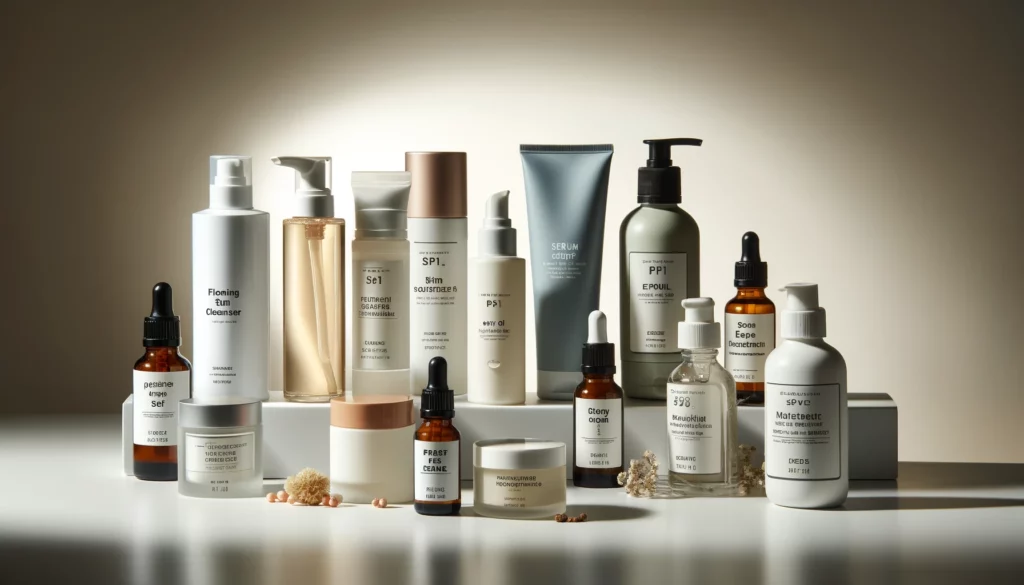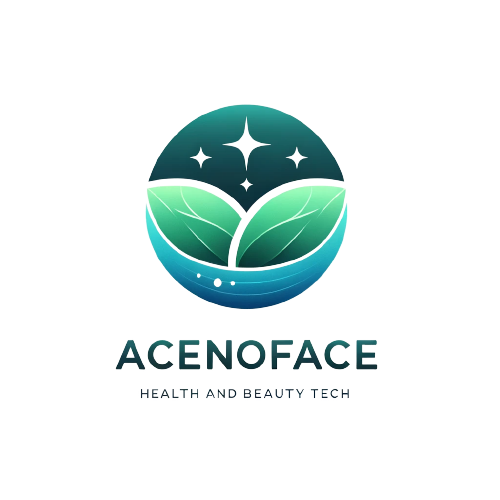Top Skincare Products
As a dermatologist with years of experience, I’m here to guide you through the essentials of an effective skincare routine. Whether you’re a skincare novice or a seasoned enthusiast, having the right products can make all the difference. In this post, we’ll explore the top skincare products you need in your routine for flawless, healthy skin.
1. Cleanser: The Foundation of Your Routine
The first step in any skincare routine is cleansing. A good cleanser removes dirt, oil, and makeup, preparing your skin for the rest of your routine. Choose a cleanser based on your skin type:
- For Oily Skin: Look for a foaming or gel cleanser that can help control excess oil.
- For Dry Skin: Opt for a hydrating cream or oil-based cleanser that won’t strip your skin of its natural moisture.
- For Sensitive Skin: A gentle, fragrance-free cleanser is best to avoid irritation.
Example: CeraVe Hydrating Cleanser is excellent for dry skin, while Neutrogena Oil-Free Acne Wash works well for oily skin.
2. Toner: Balancing and Preparing
Toners can often be overlooked, but they’re a crucial step in balancing your skin’s pH and removing any leftover impurities after cleansing. They can also prep your skin to absorb serums and moisturizers better.
- For Oily/Acne-Prone Skin: Look for a toner with salicylic acid or witch hazel.
- For Dry/Sensitive Skin: Choose an alcohol-free toner with soothing ingredients like aloe vera or rose water.
Example: Thayers Witch Hazel Toner is great for oily skin, while Kiehl’s Calendula Herbal-Extract Toner is suitable for sensitive skin.
3. Serum: Targeted Treatments
Serums are concentrated treatments designed to address specific skin concerns, such as wrinkles, dark spots, or dehydration. Incorporating a serum into your routine can yield significant improvements.
- For Anti-Aging, Look for serums with retinol or peptides.
- For Hydration: Hyaluronic acid serums are a fantastic choice.
- For Brightening: Vitamin C serums can help even out skin tone and reduce pigmentation.
Example: The Ordinary Hyaluronic Acid 2% + B5 for hydration, and SkinCeuticals C E Ferulic for brightening.
4. Moisturizer: Hydration and Protection
A moisturizer helps lock in all the benefits of the products you’ve applied and keeps your skin hydrated. Even oily skin needs moisturizer to prevent it from producing excess oil.
- For Oily Skin: Use a lightweight, oil-free moisturizer.
- For Dry Skin: Opt for a more prosperous, cream-based moisturizer.
- For Combination Skin: A balanced, gel-based moisturizer works well.
Example: Clinique Dramatically Different Moisturizing Gel is perfect for oily skin, and CeraVe Moisturizing Cream is ideal for dry skin.
5. Sunscreen: Daily Protection
Sunscreen is arguably the most crucial product in your skincare routine. It protects your skin from harmful UV rays, preventing premature aging and reducing the risk of skin cancer.
- For Daily Use: A broad-spectrum SPF of at least 30 is recommended.
- For Sensitive Skin: Look for mineral sunscreens with zinc oxide or titanium dioxide.
Example: La Roche-Posay Anthelios Melt-in Milk Sunscreen SPF 100 for comprehensive protection.
The Importance of Including Sunscreen in Your Skincare Routine
When it comes to maintaining healthy, youthful skin, one product stands out above the rest: sunscreen. Incorporating sunscreen into your daily skincare routine is not just about preventing sunburns—it’s a crucial step in protecting your skin from long-term damage. Sunscreen helps to shield your skin from harmful UVA and UVB rays, which can cause premature aging and hyperpigmentation and increase the risk of skin cancer.
Why You Need Sunscreen:
- Prevents Premature Aging: UV rays can accelerate the aging process, leading to wrinkles, fine lines, and loss of elasticity.
- Reduces Hyperpigmentation: Sun exposure can cause dark spots and uneven skin tone. Regular use of sunscreen helps maintain a more even complexion.
- Lowers Skin Cancer Risk: Consistent application of sunscreen significantly reduces the risk of developing skin cancer, including melanoma.
How to Choose the Right Sunscreen:
- Broad-Spectrum Protection: Ensure your sunscreen protects against both UVA and UVB rays.
- SPF 30 or Higher: For adequate protection, use sunscreen with an SPF of at least 30.
- Skin Type Considerations: Choose a formula that suits your skin type—non-comedogenic for oily skin, moisturizing for dry skin, and hypoallergenic for sensitive skin.
Application Tips:
- Daily Use: Apply sunscreen every morning, regardless of the weather or season.
- Reapply Regularly: Reapply every two hours or more often if swimming or sweating.
- Use Enough: Use about a nickel-sized amount for your face and more for exposed areas of your body.
By making sunscreen a non-negotiable part of your skincare routine, you’re investing in the long-term health and appearance of your skin. Remember, the best anti-aging product you can use is sunscreen.

6. Exfoliant: Removing Dead Skin Cells
Exfoliation helps to remove dead skin cells, promoting a smoother and brighter complexion. Depending on your skin type, you can choose between physical exfoliants (scrubs) or chemical exfoliants (acids).
- For Oily/Acne-Prone Skin: Salicylic acid exfoliants can help unclog pores.
- For Dry/Sensitive Skin: Lactic acid is gentler and helps to exfoliate without irritating the skin.
Example: Paula’s Choice Skin Perfecting 2% BHA Liquid Exfoliant for oily skin and The Ordinary Lactic Acid 5% + HA for dry skin.
7. Eye Cream: Targeting the Delicate Eye Area
The skin around your eyes is thinner and more delicate, making it prone to dryness and signs of aging. Using a specialized eye cream can help address concerns such as puffiness, dark circles, and fine lines.
- For Puffiness: Look for eye creams with caffeine.
- For Dark Circles: Vitamin C and peptides can help brighten the under-eye area.
- For Fine Lines: Retinol and hyaluronic acid are effective ingredients.
Example: Origins GinZing Refreshing Eye Cream for puffiness and Neutrogena Rapid Wrinkle Repair Eye Cream for fine lines.
8. Face Oil: Sealing in Moisture
Face oils can be a beneficial addition to your skincare routine, especially for dry skin. They help to seal in moisture and provide a barrier against environmental stressors.
- For Oily Skin: Lightweight oils like jojoba or grapeseed are best.
- For Dry Skin: Richer oils such as argan or rosehip oil provide deep hydration.
Example: The Ordinary 100% Organic Cold-Pressed Rose Hip Seed Oil for dry skin and Herbivore Botanicals Lapis Facial Oil for oily skin.
9. Face Mask: Weekly Treatments
Incorporating a face mask into your routine once or twice a week can provide your skin with an extra boost. Choose a mask based on your skin’s needs:
- For Oily Skin: Clay masks can help absorb excess oil and purify pores.
- For Dry Skin: Hydrating masks with ingredients like hyaluronic acid or honey can provide a moisture surge.
- For Dull Skin: Brightening masks with vitamin C or enzymes can revitalize your complexion.
Example: Aztec Secret Indian Healing Clay for oily skin and Fresh Rose Face Mask for dry skin.
10. Spot Treatment: Addressing Blemishes
For those occasional breakouts, having a spot treatment on hand can be a lifesaver. Spot treatments are designed to target and reduce the appearance of blemishes quickly.
- For Acne: Benzoyl peroxide or salicylic acid treatments can help reduce inflammation and bacteria.
- For Dark Spots: Treatments with hydroquinone or niacinamide can help lighten hyperpigmentation.
Example: Clean & Clear Advantage Acne Spot Treatment for acne and Murad Rapid Age Spot and Pigment Lightening Serum for dark spots.
Conclusion
Incorporating these top skincare products into your routine can help you achieve and maintain healthy, glowing skin. Remember to choose products based on your skin type and specific concerns, and always listen to your skin’s needs. Consistency is critical, and with the right products, you’re well on your way to achieving your best skin yet. Happy skincare journey!

